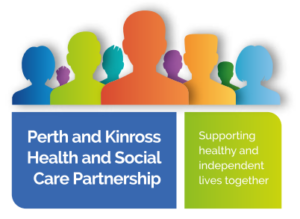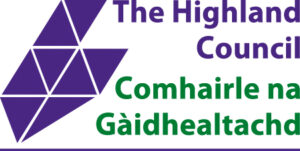Covid-19 Workforce Planning For The Health And Social Care Workforce In Scotland – May 2020
Submission From Social Work Scotland To Scottish Government
26 May 2020
Do you agree with how we propose to develop new assumptions and the evidence base? Do you have any alternative or additional suggestions that we should consider?
We agree that workforce planning in the light of Covid19 must separately consider the immediate, medium term, and long term contexts and objectives. (para 7i). In Annex A, these are described as Respond, Recover, Renew.
Scotland and the rest of the UK is not yet at the end of the Respond period. While there is evidence that social distancing and lockdown has reduced the virus transmission rate, there are still new cases and fatalities especially in care homes and the community. A cautious and phased approach to lockdown remains essential but, despite improvements, this will be hampered by the insufficient supply of PPE for all who need it, by the current limitations on the volume of “test-trace-isolate” initiatives in the health and social care sectors.
Providing adequate support to NHS, care homes, home care, mental health, domestic abuse, financial support, food banks, volunteer coordination, and other essential services must remain the top priority of the Government, the public sector, and society.
It is not obvious how changing the Workforce Plan at national level can assist that work at local level. Rather we all need to learn from what has been done well and what hasn’t in the response so far to the virus.
Apart from the shortage of PPE and testing, lessons need to be learnt from discharging untested patients from hospital to care homes because they were considered “medically fit for discharge”, and its contribution to the high rate of death from Covid-19 in care homes. Lessons also need to be learnt from the failure of the NHS to meet normal demand while freeing bed capacity for Covid-19. Some of the excess mortality in this period will be due to cancelled diagnosis and treatment for people with cancer, heart disease or other life-threatening conditions. In both these cases, the lesson is that too narrow an understanding of “Protect the NHS” costs lives as well as saving others.
Health and social care integration requires both parts to be considered equally. While the current Integrated Health and Social Care Work Plan is a significant step forward, it is noteworthy that there are far fewer specific commitments relating to social care than health, despite the fact that their workforces are of broadly similar size.
We consider that additional resource is most likely to be required across mental health services for all ages, and across social care. The independent sector will require to adjust to the impact of Covid-19, and this will impact on capacity at local level and the support required from councils and partnerships.
What should we do about our existing Integrated Workforce Plan and workforce commitments?
We think it is too early to make significant changes to the Workforce Plan for the longer term, as the “Renew” landscape will be not yet clear. There is growing support in Scotland for a fundamental review of social care, including funding and care models, and that is something Social Work Scotland welcomes and will support.
There are some critical key questions whose answer will form the main parameters of the next phase:
- Does exposure to the virus create immunity, and if so, for how long?
- Will an effective vaccine to Covid19 be found soon, and be produced at scale and reasonable cost to governments, so that it can be used world-wide?
- Will the virus mutate, either to a new equally virulent form, or, like the common cold, to a much less harmful form?
- Can PPE be produced, purchased and distributed in larger volumes to meet all needs for protection?
- Can the testing for live virus be massively increased, with associated contact tracing, so that people infected can be isolated, and transmission stopped? Health and Care staff, and the people using their services need such testing frequently. The contract tracing human resources needed are significant and in need of planning.
- Can the random sampling for live virus, which has only recently started in England (in a joint project between ONS and Oxford University), be increased to show the variation around the average prevalence (currently 1 in 400) between different areas of the UK, and urban versus rural areas, in order to provide the firmer epidemiology necessary for current and future planning?
- Can this random testing be combined with antibody testing to provide evidence of re-infection rates and possible “herd immunity”, also needed to provide the firmer epidemiology necessary for planning renewal?
The current Workforce Plan commitments were based on meeting identified needs, which have not gone away. The question now is whether there are more important Covid19-related priorities for the resources allocated to these commitments; if so, then the commitments should be deferred. We are sure that all stakeholders, especially Integration Authorities, Councils, and the NHS will already be acting pragmatically. Covid-related priorities must include restoring essential health and social care services for people on waiting lists whose diagnostic tests, assessments, treatments or support have been deferred, and for people who have not been referred not come forward because of current Covid19 priorities.
How do we best manage workforce planning as a whole-system endeavour, across the integrated health and social care landscape?
See the points made about information under questions (4) and (6).
Urgent consideration needs to be given to increasing the flexibility of the workforce to operate across health and social care sectors, and public and independent sectors, understanding that this will require regard to terms and conditions, training and professional registration.
The voice of people who use services should underpin assumptions about workforce demand across the system. The usual pattern of care delivery has been temporarily altered to a significant extent, as some partnerships have sought to reduce their volume of service delivery, some have restricted flexibility and some have increased personalisation. Some people have opted of their own accord to temporarily reduce their reliance on directly funded social care, due to risk of contracting Covid-19, others have been approached by partnerships requesting to reduce their POC, others have changed their Self-directed Support option in order to find the model of support that best suits them at this time. Preferences In short, their experiences are significantly different to what they were prior to the pandemic.
The experience and needs of the Personal Assistant workforce should be drawn out, as they are a small but crucial sector in the delivery of personalised social care.
Local governance arrangements require to be strengthened and closely aligned with national workforce priorities. The statutory role of social work needs to be accommodated in national and local workforce planning.
Lessons learned from the pandemic about effective use of flexible working, home and remote working, and the use of digital meeting platforms should be incorporated.
What kind of workforce plan do you think will be required to cope with rapidly changing circumstances throughout the pandemic and after?
The role of the Scottish Government here is to support, with information, guidance, and resources, the relevant public bodies at local level. Many aspects of the current Workforce Plan will remain: we need to continue all the actions that ensure we have a well-trained, educated, and supported workforce at sufficient volumes to provide the services society requires.
We envisage the need for short-, medium-, and longer-term plans based on current knowledge and insight. As new service models emerge, based on changed requirements, and ideally evidence of “what works”, then the Plan can change accordingly. The possibility of further lockdown needs to be incorporated into planning assumptions.
New models of community supports need to be sustained to ameliorate the requirement for directly provided care, for example renewed consideration could be given to a Buurtzorg model of community support, and from the early adoption of Community-led Hubs (Health Improvement Scotland).~
Are there any assumptions you would add?
One specific commitment needs some attention in any event. The first bullet in para 5 of the Discussion Document states you will “As a baseline, look again at the modelling and financial assumptions set out in the integrated workforce plan published at the end of 2019”.
This is welcome as there is some lack of clarity in the statistical information underpinning the current Integrated Workforce Plan:
- The numbers of combined health and social care are given on page 8 of the Plan as “over 368,000 headcount” and “291,000 Whole Time Equivalent”. These are said to be the most up to date available data, but no weblinks are given. The “as at” dates are not given for these baseline staffing numbers; the counts are not given separately for NHS and Social Care, as they need to be; and it is not clear whether any categories of NHS or social care staff been excluded from any of these counts (eg staff at the State Hospital).
- Page 8 of the Plan states that “The Scottish Government’s Medium Term Financial Framework (MTFF) estimates that to address the effects of demand, we will require 1.3% per annum more NHS employees and 1.7% per annum more social care employees in the period to 2023/24”. We could not find that information in the Health and Social Care MTFF published in October 2018, which refers to annual growth rates of 3.5% in demand for health services and 4% for social care (H&SC MTFF pages 10 and 11). However, these are the total expenditure growth rates required to 2023/4, and include pay and price rises and other non-demographic factors. If we strip those out using the data in Figure 8 of the H&SC MTFF, then the average annual growth required in activity year on year becomes 2.9% for social care and 2.4% for health. That is still a lot higher than the 1.7% and 1.3% figures. Could we please be provided with a table showing how these staffing increases in the Workforce Plan relate to the H&SC MTFF financial projections?
Underpinning question 2. Is our concern that the staffing growth implied by the Scottish Government’s 2018 Medium Term Financial Framework has not been correctly stated in the 2019 Health and Social Care Workforce Plan, perhaps due to a statistical calculation error. For example, taking the Workforce Plan to the next stage would mean discussion of what kinds of health and social care staff are needed in the future, but if the national financial parameters are wrong, then that will impact negatively on that work.
- Page 9 of the Plan includes a chart showing how “assumed demand” will increase total WTE staffing from the baseline of 291,287 WTE, to 310,758 WTE by 2023-24, before “mitigations” bring this down to 301,808. No figures are given for the elements of increased demand, or for the individual mitigations, which also should be separated between NHS and Social Care – otherwise there is no clarity.
How would you prefer to be updated on progress with this work?
The Integrated Workforce Plan would benefit from a dedicated page on the Scottish Government website. This should include key documents, any toolkits, useful contacts, links to other sites, etc. It should also include and Excel Workbook holding the relevant staffing statistical time series starting with the Plan baseline dates, by type of staff and setting, and updated regularly by NES and SSC, with a summary page for Scotland, and in time separate pages for each Partnership area. That would provide transparency about the actual direction of travel and enable more rapid monitoring of the Plan delivery.
Ideally, members of networks and stakeholder groups would be able to sign up on the website for email alerts to updates. Meanwhile communications can continue via email.



















